Sea Grant biologists assist NOAA in ambitious sea turtle tagging study
Sea Grant biologists assist NOAA in ambitious sea turtle tagging study
Sea Grant biologists assist NOAA in ambitious sea turtle tagging study
10/17/2019
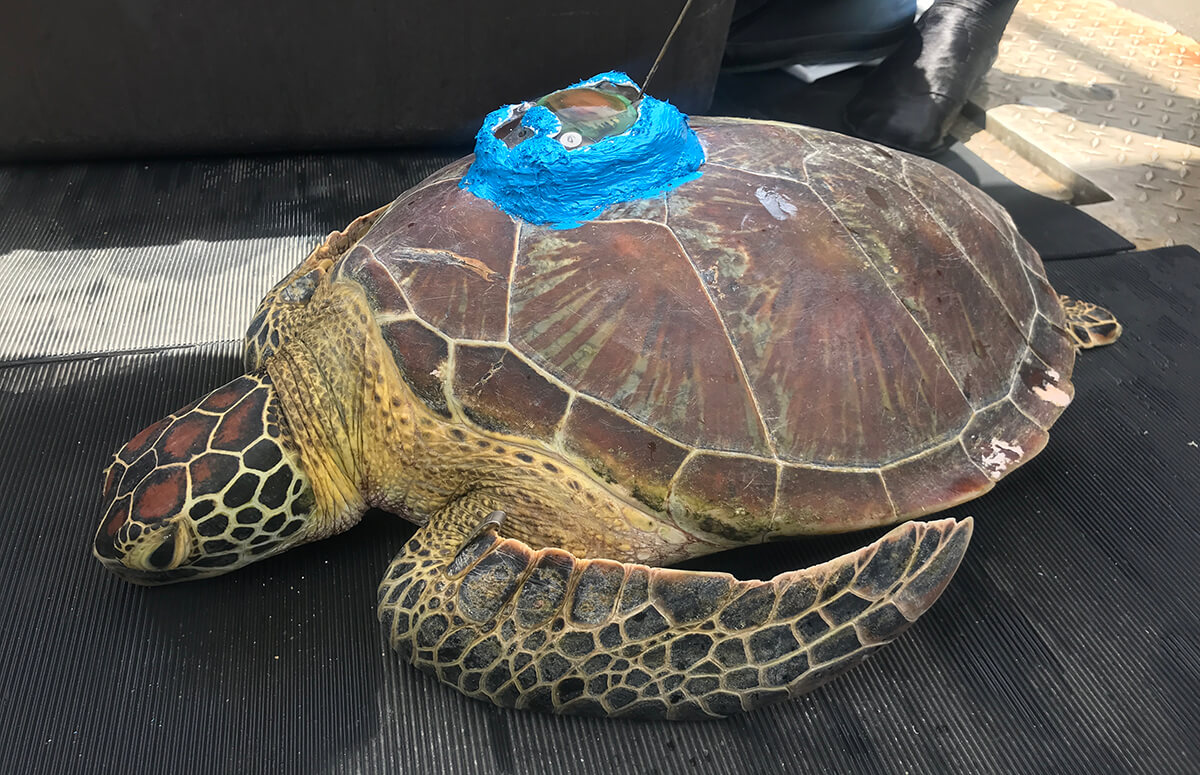
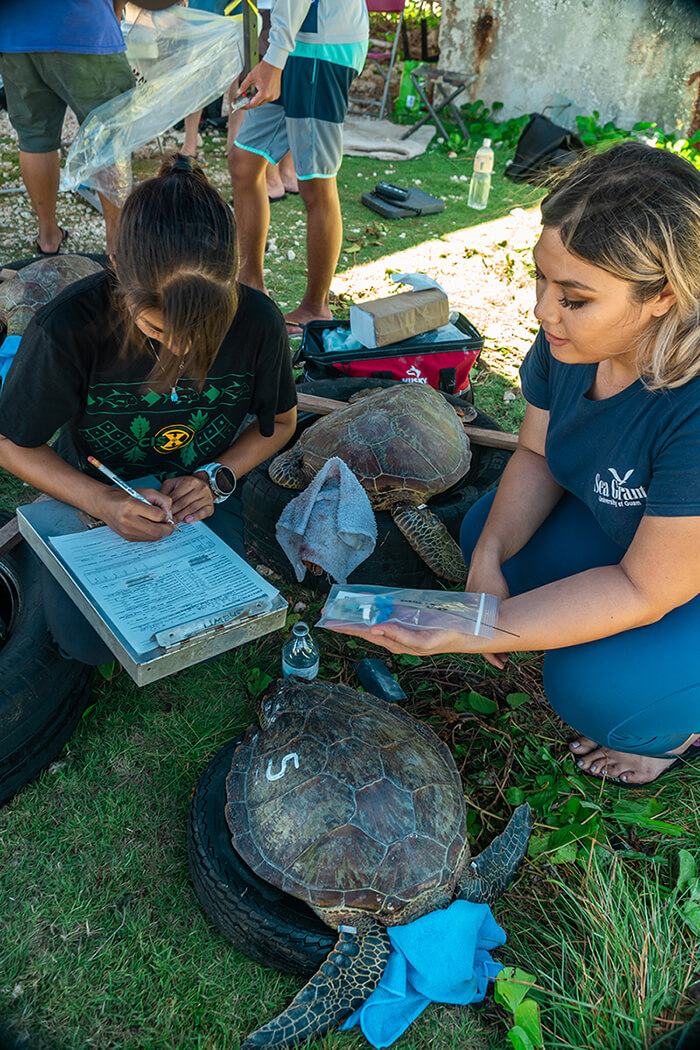
University of Guam Sea Grant biologists assisted over the summer with the Mariana Islands portion of what the National Oceanic & Atmospheric Administration is calling the “most ambitious” and “most rigorous” satellite telemetry study of foraging green turtles (haggan betde) and hawksbill turtles (haggan karai) in the world.
Satellite tagging technology allows scientists to pinpoint the location and dive depth of sea turtles as they migrate between foraging and nesting grounds, even when crossing international borders.
“Gathering this information is important to understand habitat and movement of endangered sea turtles so that we can better identify ways to protect them,” said Sea Grant biologist Josefa Muñoz.
NOAA, which is pioneering the project, worked with UOG Sea Grant and other partners in the Mariana Islands, including the Guam Department of Agriculture’s Division of Aquatic & Wildlife Resources and sea turtle expert Jessy Hapdei of Jessy’s Tag Services, to observe, capture, and tag sea turtles in an effort to learn more about their movement ecology.
The effort included various on- and off-shore excursions in which Hapdei would hand-capture the sea turtles and bring them to shore for biologists to administer the tags.
Sablan and Muñoz contributed to satellite tagging 11 of the 21 sea turtles in NOAA’s Marianas study. The tags can remain intact from several months to years, depending on the species. The biologists also helped record measurements, administer identification tags, and inject an antibiotic that stains the sea turtle’s bones so its age can be determined posthumously.
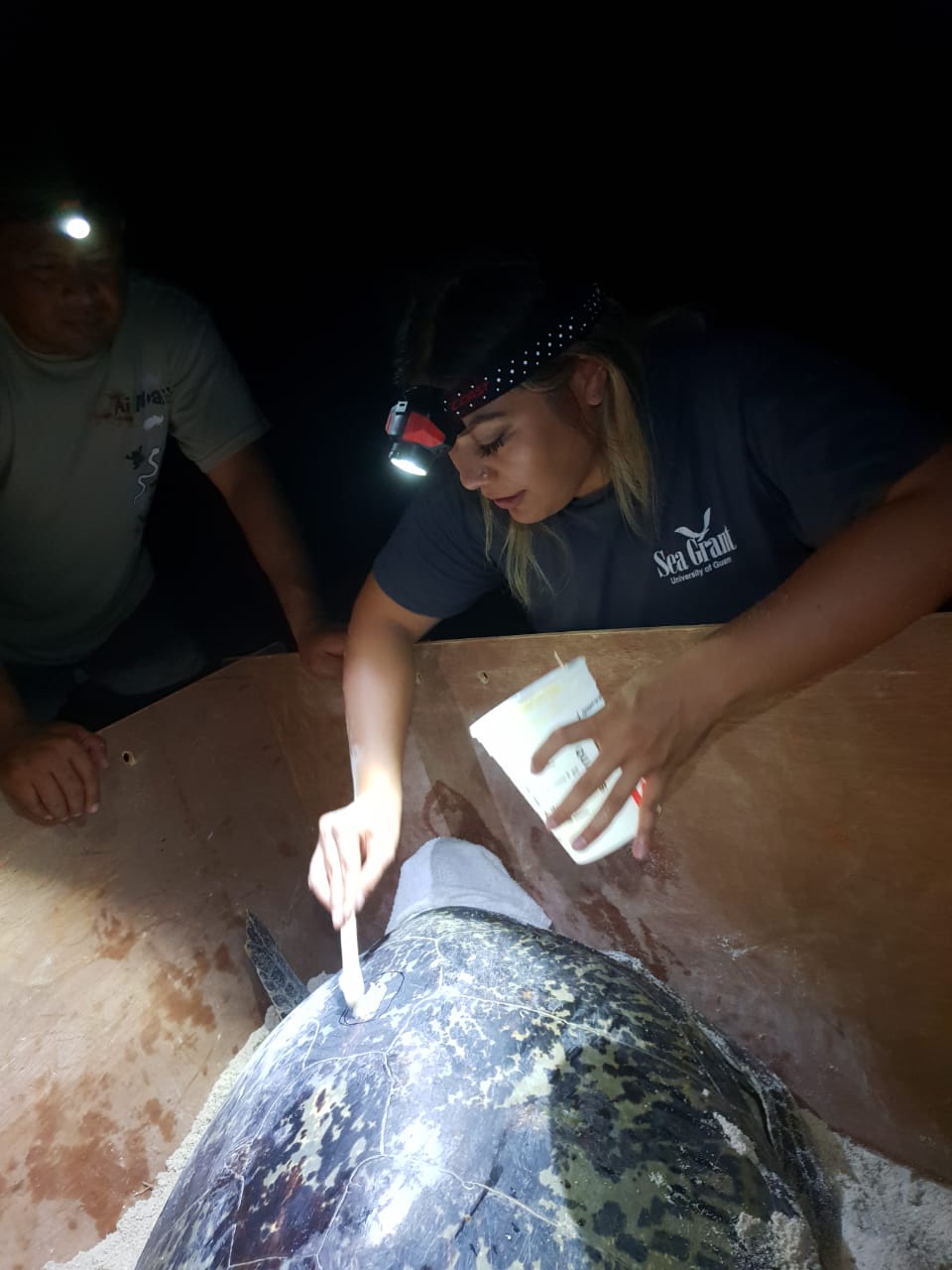
Both Sablan and Muñoz were trained and mentored by Hapdei, who is licensed to monitor and capture the sea turtles.
“They are dedicated and humble learners,” Hapdei said. “It’s easy to see how passionate
they are with their work, and they catch on to things pretty quickly.”
Guam turtles tracked to Taiwan, Philippines
As of Oct. 8, the locations were recorded of two green sea turtles that Sablan and Muñoz tagged earlier this year on Andersen Air Force Base as part of a separate nest monitoring project. A turtle tagged in March that they named Bridget has made her way to Bohol, Philippines, and a turtle named Satin that was tagged in July is now on an island just east of Taiwan.
The nest monitoring project is intended to collect data for conservation management as well as for the development of outreach materials to help the local community understand the importance of protecting these endangered species.
“This opportunity … has forever ignited my passion for the conservation of this culturally significant species — our haggan,” Muñoz said.
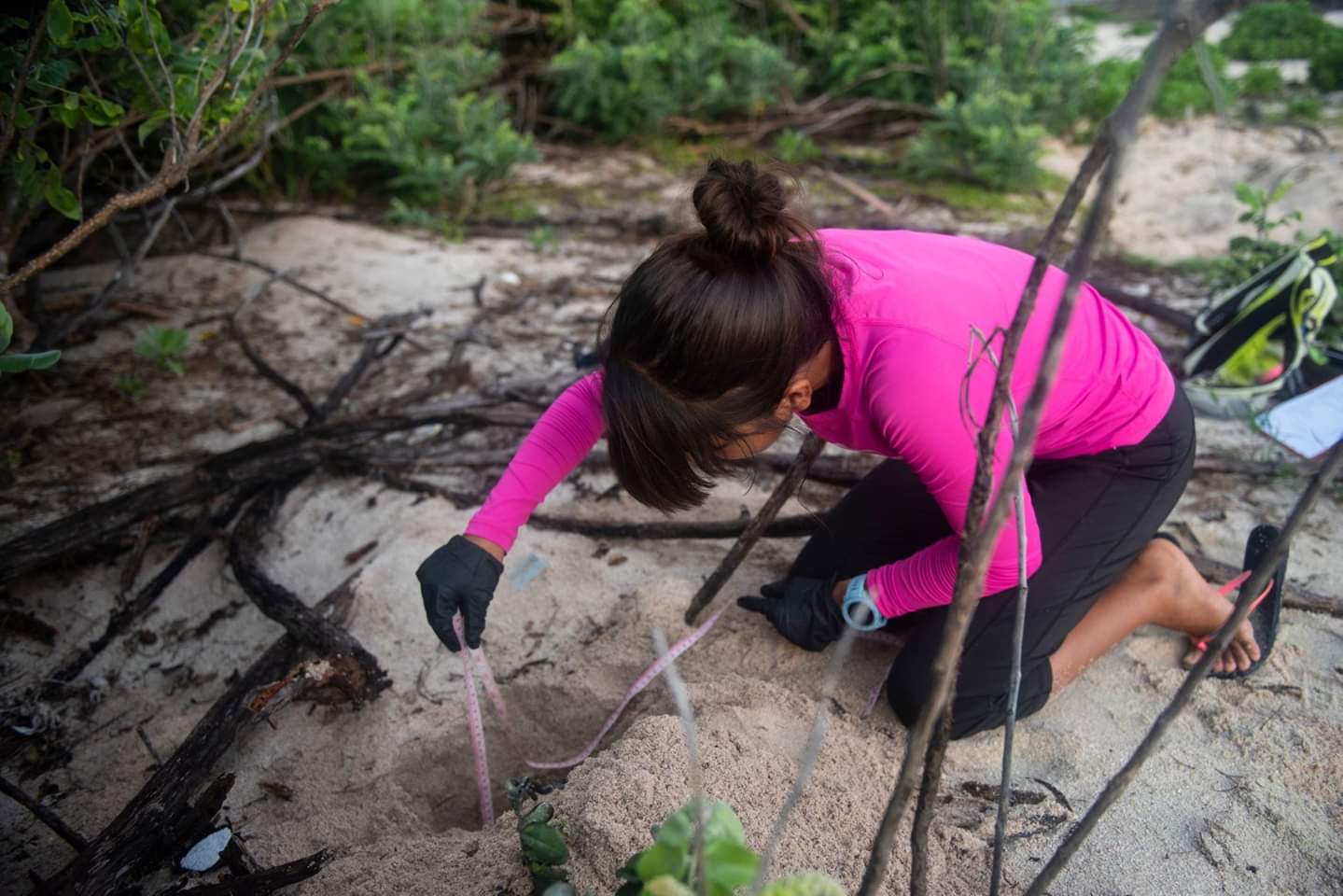
Sablan continues to monitor the nesting sites, while Muñoz is enrolled in the University of Hawai`i at Mānoa’s marine biology doctorate program and intends to conduct her dissertation research on the impacts climate change may have on Guam’s nesting green sea turtles and their hatchlings.
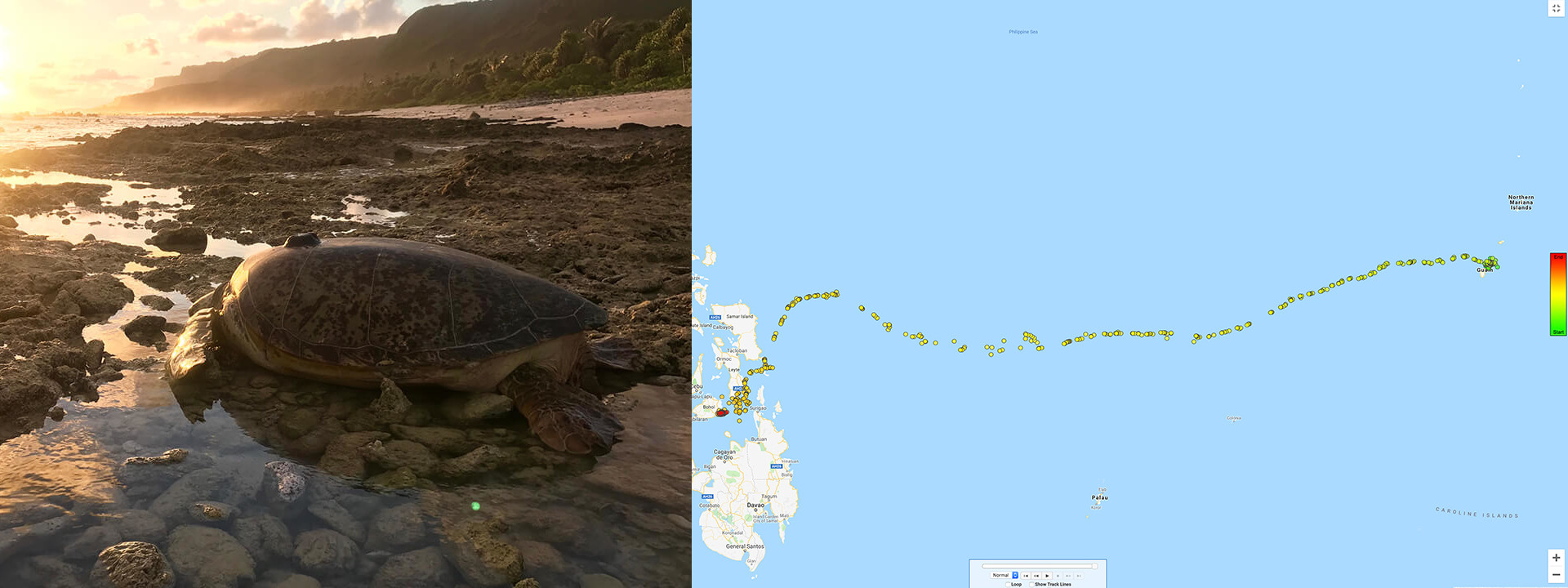
A female turtle returns to the sea in the early morning after laying her eggs and being satellite tagged on Andersen Air Force Base in March. This female, named Bridget, was tracked in the Philippines as of Oct. 8.
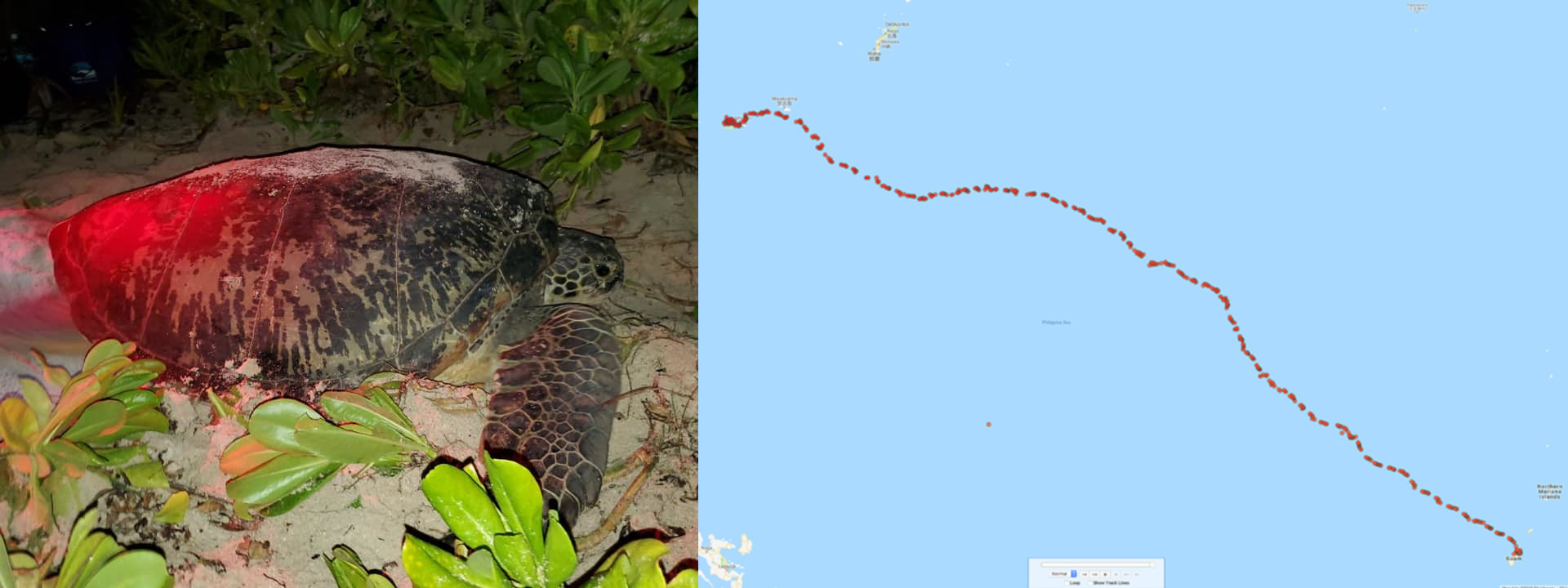
A sea turtle named Satin was found and tagged when in Guam to nest. The turtle then travelled 1,600 miles to an island east of Taiwan to forage.
UOG Sea Grant work with the sea turtles were conducted under permits NMFS ESAI0a1A 21260, 17022, and 15661.
